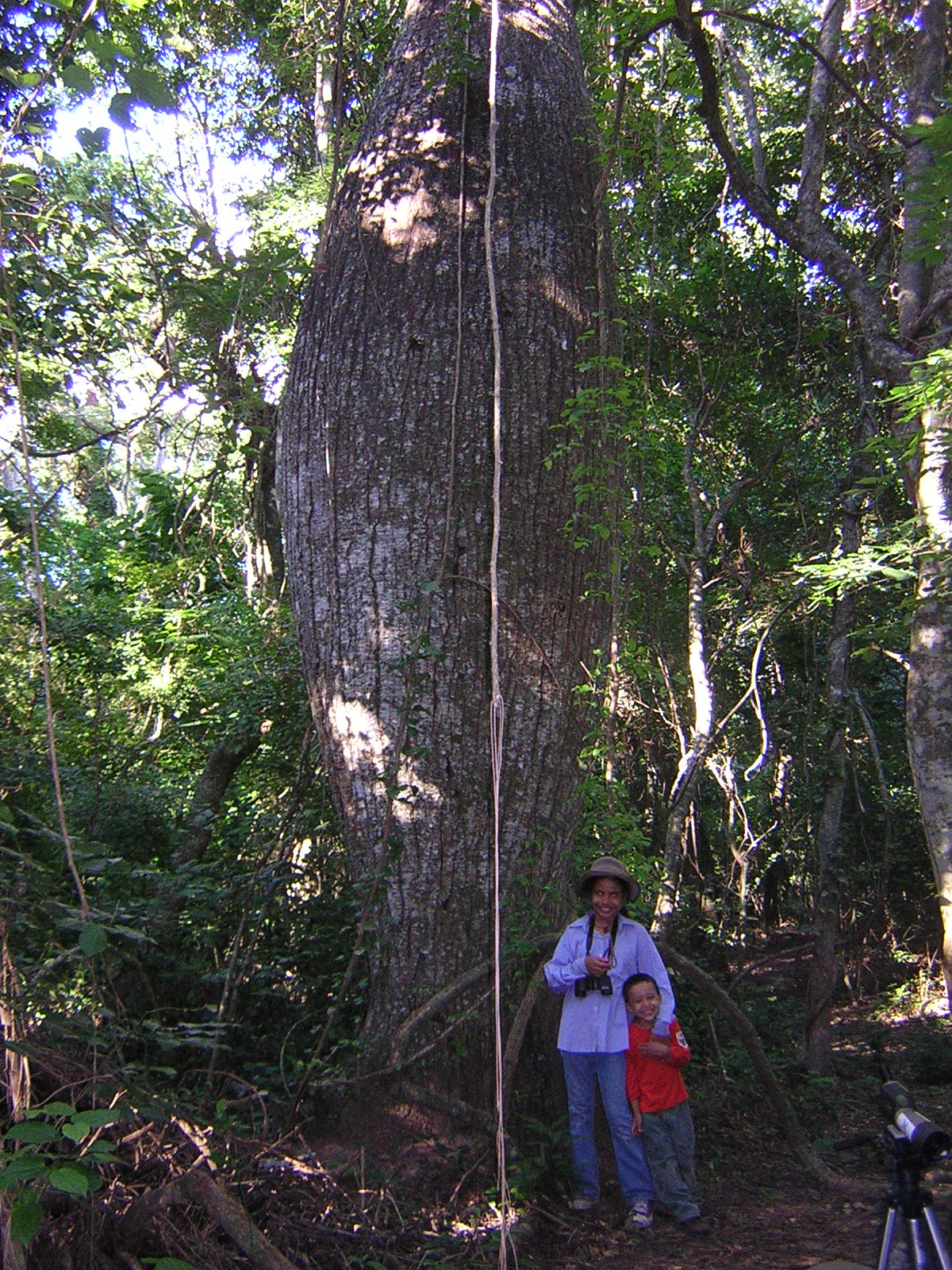Santa Cruz Botanical Gardens
by Bennett Hennessey and Lawrence Rubey Updated Nov 2018
 The Santa Cruz Botanical Gardens is easy access to the Chiquitano Dry Forest bird community including the Bolivian Speciality Bolivian Slaty-Antshrike. It is also an excellent spot to see the local Titi and Capuchin monkeys. The Botanical Gardens is an isolated fragment of Chiquitano dry forest with some patches of what the botanists call Chiquitano/Chaqueño transitional forest. The area also has a small marsh and borders on agricultural fields and pastures and chaco influenced scrub. Over 230 birds have been compiled in the area, including approximately 120 commonly seen birds and 65 breeding species. All birding is best early in the morning, but the Botanical Gardens can also be active in the afternoon, more so than other Santa Cruz sites. Some special birds of the Botanical Gardens are Rufous-breasted Hermit, Buff-bellied Hermit, Red-billed Scythebill, Mato Grosso Antbird, Bolivian Slaty-Antshrike, and Fawn-breasted Wren. The Santa Cruz Botanical Gardens is easy access to the Chiquitano Dry Forest bird community including the Bolivian Speciality Bolivian Slaty-Antshrike. It is also an excellent spot to see the local Titi and Capuchin monkeys. The Botanical Gardens is an isolated fragment of Chiquitano dry forest with some patches of what the botanists call Chiquitano/Chaqueño transitional forest. The area also has a small marsh and borders on agricultural fields and pastures and chaco influenced scrub. Over 230 birds have been compiled in the area, including approximately 120 commonly seen birds and 65 breeding species. All birding is best early in the morning, but the Botanical Gardens can also be active in the afternoon, more so than other Santa Cruz sites. Some special birds of the Botanical Gardens are Rufous-breasted Hermit, Buff-bellied Hermit, Red-billed Scythebill, Mato Grosso Antbird, Bolivian Slaty-Antshrike, and Fawn-breasted Wren.
The Botanical Garden is of a rectangular shape with trails traveling around and within the forested perimeter, allowing access to forest and forest-edge birds. Be aware that these trails can be fairly muddy and flooded in places during the rainy season. The trail can be used to form a 3 km and a 5 km loop. We recommend starting the trail in the left corner by the fence (side gate), having the main road at your back. The trail travels along the edge of the marsh passing several lookout areas. Keep an eye out for Snail Kite, Black-collared Hawk, Social Flycatcher, Flavescent Warbler, and Red-capped Cardinal. Listen out for a Blue-crowned Motmot and Rufous-tailed Jacamar that breed in the area.
The best spot to see the Bolivian Slaty-Antshrike has been the central trail heading into the forest. The bird can be found low to the ground in tall forest, best located by sound and will respond to playback.
 Follow the left trail, often muddy, away from the main road. This area has been the best spot for Red-billed Scythebill foraging along the trunks. In the roadside scrub, listen out for the skulkers; White-backed Fire-eye, Mato Groso Antwren and Fawn-breasted Wren. The trail travels straight through forest and scrub for approximately 2 km. At approx.
1 km there is a trail cutting to the right, which can be used to form a small loop through the forest, or you can continue straight through more open habitat for another
1 km to another trail on the right. In the forest look out for Black-fronted Nunbird, Rufous-tailed Jacamar, Golden-olive Woodpecker, Black-banded Woodcreeper, Buff-throated Woodcreeper, Streaked Xenops, Black-capped Antwren, and Band-tailed Manakin. Both trails connect with another straight trail following the other side of the Botanical Garden, that can take you back to the main road. Don’t be surprised to meet the friendly-armed security guards along the trail- especially at sunset when they make their rounds. Follow the left trail, often muddy, away from the main road. This area has been the best spot for Red-billed Scythebill foraging along the trunks. In the roadside scrub, listen out for the skulkers; White-backed Fire-eye, Mato Groso Antwren and Fawn-breasted Wren. The trail travels straight through forest and scrub for approximately 2 km. At approx.
1 km there is a trail cutting to the right, which can be used to form a small loop through the forest, or you can continue straight through more open habitat for another
1 km to another trail on the right. In the forest look out for Black-fronted Nunbird, Rufous-tailed Jacamar, Golden-olive Woodpecker, Black-banded Woodcreeper, Buff-throated Woodcreeper, Streaked Xenops, Black-capped Antwren, and Band-tailed Manakin. Both trails connect with another straight trail following the other side of the Botanical Garden, that can take you back to the main road. Don’t be surprised to meet the friendly-armed security guards along the trail- especially at sunset when they make their rounds.
Logistics: The Botanical Gardens is approximately 3km on the right side from the tranca of Cotoca on Avenida Virgen de Cotoca. A taxi drive from the center should cost around $4, though make sure he takes you to the new Botanical Gardens after the Cotoca tranca, and not the old one, that was destroyed by a flood about 7 years ago.
It is open all week including weeks, but I don't think the gate is open very early- we usually visit in the afternoon.
Bird List
|

